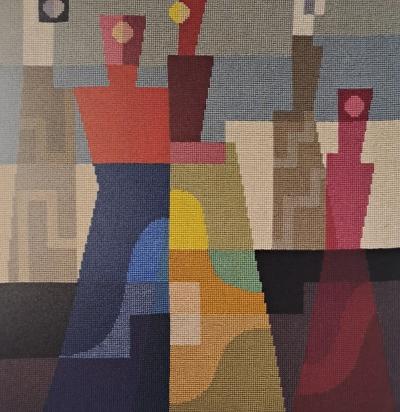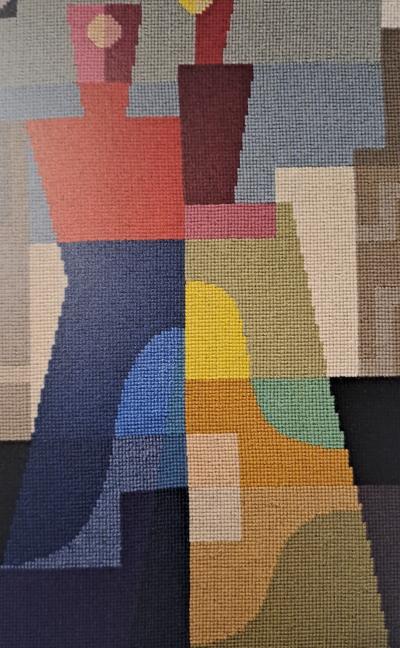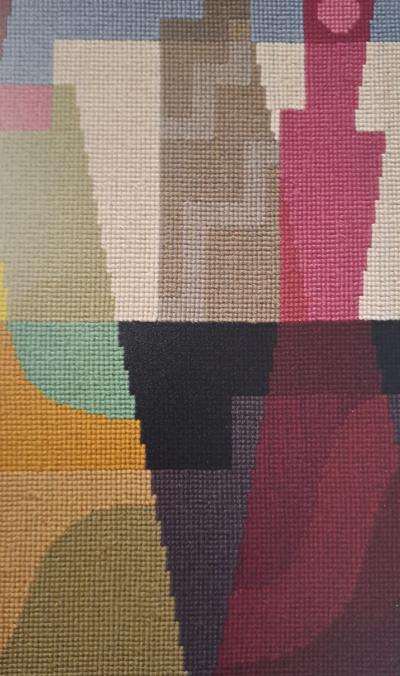Retour
Browse catalogue
-
-
- Alexander Calder(15)
- André Derain(85)
- Andy Warhol(18)
- Antoni Tapiès(23)
- Arman(29)
- Aurélie Nemours(1)
- Bengt Lindström(7)
- Bernard Buffet(160)
- César(7)
- Charles Eames(1)
- Charlotte Perriand(17)
- Claude Weisbuch(40)
- Corneille van Beverloo(12)
- Eduardo Chillida(7)
- François Morellet(1)
- Georges Braque(71)
- Gustav Klimt(7)
- Hans Bellmer(20)
- Hans Hartung lithograph(27)
- Henri Matisse(157)
- Hervé Télémaque(6)
- Jacques Villeglé(6)
- Jean Cocteau(233)
- Jean Hélion(8)
- Jean Miotte(4)
- Jean Picart Le Doux(5)
- Joan Miro(116)
- Karel Appel(1)
- Keith Haring(10)
- Ladislas Kijno(3)
- Léonard Tsugouharu Foujita(39)
- Leonor Fini(99)
- Louis Toffoli(8)
- Marc Chagall(315)
- Marie Laurencin(46)
- Maurice de Vlaminck(41)
- Maurice Utrillo(13)
- Max Ernst(33)
- Mimmo Rotella(4)
- Niki de Saint Phalle(3)
- Pablo Picasso(401)
- Peter Klasen(6)
- Philippe Pasqua(3)
- Pierre Alechinsky(36)
- Pierre Soulages lithographs(39)
- Pierre Tal-Coat(6)
- Pierre-Yves Trémois(33)
- Raoul Dufy(51)
- Robert Combas(6)
- Salvador Dali(429)
- Théo Tobiasse(3)
- Tony Soulié(11)
- Valério Adami(35)
- Victor Vasarely(5)
- Yves Brayer(43)
- Zao Wou-Ki(10)
Top artists -
-
Retour
Browse catalogue
-
-
- Alexander Calder(15)
- André Derain(85)
- Andy Warhol(18)
- Antoni Tapiès(23)
- Arman(29)
- Aurélie Nemours(1)
- Bengt Lindström(7)
- Bernard Buffet(160)
- César(7)
- Charles Eames(1)
- Charlotte Perriand(17)
- Claude Weisbuch(40)
- Corneille van Beverloo(12)
- Eduardo Chillida(7)
- François Morellet(1)
- Georges Braque(71)
- Gustav Klimt(7)
- Hans Bellmer(20)
- Hans Hartung lithograph(27)
- Henri Matisse(157)
- Hervé Télémaque(6)
- Jacques Villeglé(6)
- Jean Cocteau(233)
- Jean Hélion(8)
- Jean Miotte(4)
- Jean Picart Le Doux(5)
- Joan Miro(116)
- Karel Appel(1)
- Keith Haring(10)
- Ladislas Kijno(3)
- Léonard Tsugouharu Foujita(39)
- Leonor Fini(99)
- Louis Toffoli(8)
- Marc Chagall(315)
- Marie Laurencin(46)
- Maurice de Vlaminck(41)
- Maurice Utrillo(13)
- Max Ernst(33)
- Mimmo Rotella(4)
- Niki de Saint Phalle(3)
- Pablo Picasso(401)
- Peter Klasen(6)
- Philippe Pasqua(3)
- Pierre Alechinsky(36)
- Pierre Soulages lithographs(39)
- Pierre Tal-Coat(6)
- Pierre-Yves Trémois(33)
- Raoul Dufy(51)
- Robert Combas(6)
- Salvador Dali(429)
- Théo Tobiasse(3)
- Tony Soulié(11)
- Valério Adami(35)
- Victor Vasarely(5)
- Yves Brayer(43)
- Zao Wou-Ki(10)
Top artists -
-
Create My Account
Sophie Taeuber-Arp (after) - Figures, 1926 - Luxury art print
Sophie Taeuber-Arp (after) (1889-1943
Figures, 1926
Luxury art print, on 300gsm Purcell Ultrasmooth matte paper, museum quality
Dimensions: 60 x 45 cm
Image dimensions: 32.5 x 32.5 cm
(TG)
Very good condition
Sophie Taeuber-Arp was a multidisciplinary artist who effectively explored a wide variety of mediums, including embroidery, painting, sculpture and dance. Her work, influenced by the Dada movement and Constructivism, was characterized by a geometric and abstract approach.
Sophie Taeuber-Arp's embroidery and textile works have indeed long been relegated to the background in exhibitions devoted to the artist, often due to prejudices concerning the so-called "decorative" or "minor" arts. Textiles, historically associated with crafts and women's work, were often considered inferior to fine arts such as painting or sculpture. However, Taeuber-Arp, as an avant-garde artist, defied these distinctions by considering her textile works and embroideries as artistic expressions in their own right, equal to her paintings, sculptures and puppets.
Dimensions :
- Height : 60 cm
- Width : 45 cm
Figures, 1926
Luxury art print, on 300gsm Purcell Ultrasmooth matte paper, museum quality
Dimensions: 60 x 45 cm
Image dimensions: 32.5 x 32.5 cm
(TG)
Very good condition
Sophie Taeuber-Arp was a multidisciplinary artist who effectively explored a wide variety of mediums, including embroidery, painting, sculpture and dance. Her work, influenced by the Dada movement and Constructivism, was characterized by a geometric and abstract approach.
Sophie Taeuber-Arp's embroidery and textile works have indeed long been relegated to the background in exhibitions devoted to the artist, often due to prejudices concerning the so-called "decorative" or "minor" arts. Textiles, historically associated with crafts and women's work, were often considered inferior to fine arts such as painting or sculpture. However, Taeuber-Arp, as an avant-garde artist, defied these distinctions by considering her textile works and embroideries as artistic expressions in their own right, equal to her paintings, sculptures and puppets.
Dimensions :
- Height : 60 cm
- Width : 45 cm
This description has been translated automatically. please click here Click here to display the original language FR
Sophie Taeuber-Arp (d'après) (1889-1943
Figures, 1926
Tirage d'art de luxe, sur papier Purcell Ultrasmooth mat de 300 gr, qualité muséale
Dimensions : 60 x 45 cm
Dimensions de l'image : 32,5 x 32,5 cm
(TG)
Très bon état
Sophie Taeuber-Arp était une artiste multidisciplinaire qui a effectivement exploré une grande variété de médiums, notamment la broderie, la peinture, la sculpture et la danse. Son travail, influencé par le mouvement Dada et le constructivisme, se caractérisait par une approche géométrique et abstraite.
La broderie et les œuvres textiles de Sophie Taeuber-Arp ont effectivement été longtemps reléguées au second plan dans les expositions consacrées à l'artiste, souvent en raison des préjugés concernant les arts dits "décoratifs" ou "mineurs". Le textile, associé historiquement à l'artisanat et au travail féminin, était souvent considéré comme inférieur aux beaux-arts tels que la peinture ou la sculpture. Cependant, Taeuber-Arp, en tant qu'artiste avant-gardiste, a défié ces distinctions en considérant ses œuvres textiles et ses broderies comme des expressions artistiques à part entière, égales à ses peintures, sculptures et marionnettes.
Figures, 1926
Tirage d'art de luxe, sur papier Purcell Ultrasmooth mat de 300 gr, qualité muséale
Dimensions : 60 x 45 cm
Dimensions de l'image : 32,5 x 32,5 cm
(TG)
Très bon état
Sophie Taeuber-Arp était une artiste multidisciplinaire qui a effectivement exploré une grande variété de médiums, notamment la broderie, la peinture, la sculpture et la danse. Son travail, influencé par le mouvement Dada et le constructivisme, se caractérisait par une approche géométrique et abstraite.
La broderie et les œuvres textiles de Sophie Taeuber-Arp ont effectivement été longtemps reléguées au second plan dans les expositions consacrées à l'artiste, souvent en raison des préjugés concernant les arts dits "décoratifs" ou "mineurs". Le textile, associé historiquement à l'artisanat et au travail féminin, était souvent considéré comme inférieur aux beaux-arts tels que la peinture ou la sculpture. Cependant, Taeuber-Arp, en tant qu'artiste avant-gardiste, a défié ces distinctions en considérant ses œuvres textiles et ses broderies comme des expressions artistiques à part entière, égales à ses peintures, sculptures et marionnettes.
-
Create an alert
Create an alert
Please subscribe to our free alert service to be notified when a similar item is available on the website.
Sold
This item is not available. Please click on « View the catalog » to see similar items available.
Hotline
Please contact us for any question regarding this object. For any other inquiry, we invite you to fill the contact form.
Other items from the category « Sophie Taeuber-Arp »
This should also please you
Ask a question









